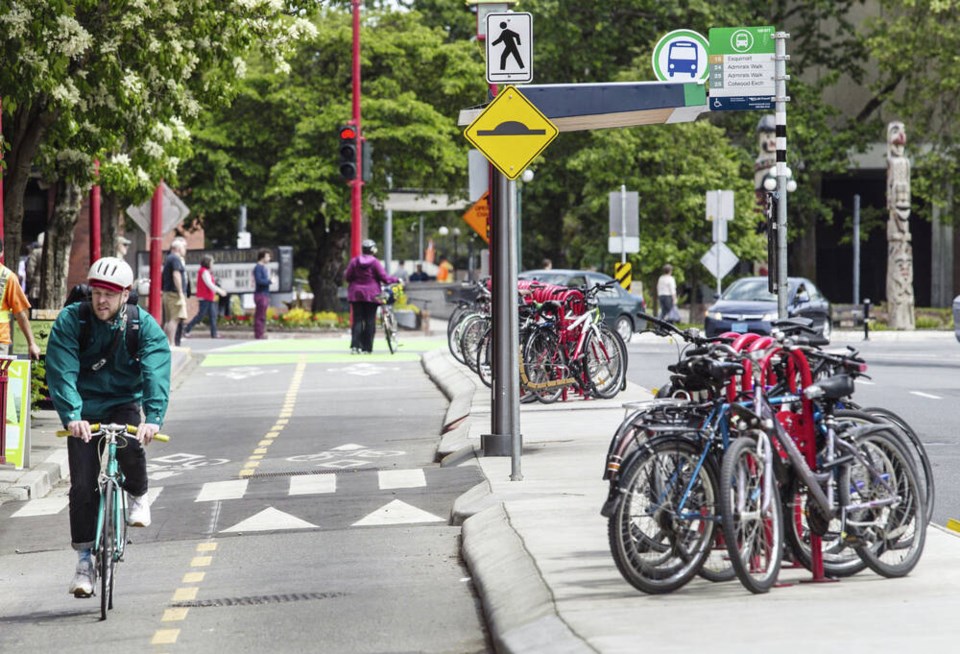It’s interesting to notice the way certain things are changing as society moves through the clutches of COVID.
Thanks to science and medicine, there’s little question that we’re living with the COVID problem much differently than even a year ago. The world around us has changed. Look at the economy for starters.
You wouldn’t think so, but road and traffic safety is one of those things very much affected by COVID and our responses to it.
I uncovered some fascinating data that traffic safety analysts looked at when they started comparing road safety trends between Canada and the U.S.
Spoiler alert: At the moment, driving north of the 49th parallel is way safer than on American roads.
In 2021 there were 42,915 traffic deaths in the U.S., up from 38,824 in 2020 — a 10.5% increase. U.S. transportation secretary Pete Buttigieg recently called these numbers “a crisis on America’s roadways that we must address together.”
Over the past two years, U.S. traffic deaths rose by 19% while in Canada they fell by roughly that same number. For every million U.S. citizens during this period there were 118 traffic fatalities — in Canada there were 46.
Why would that be?
Physically our urban and rural environments are pretty much identical in terms of road configurations, signage, traffic rules and civil engineering.
We basically drive all of the same types of vehicles thanks to an integrated automotive production, market distribution and sales system.
However there are some important distinctions in transportation culture and policy at play in comparing Canada and the U.S.
For one, the U.S. motorist has basically ditched the standard sedan as the vehicle of choice. While there is a similar trend in Canada, it seems that we’re more content with smaller versions of SUVs or vehicles which are “other than sedans.”
In contrast, through a spate of large scale price discounts and dealer incentives, the large luxury truck and SUV market in the States has exploded. Seventy per cent of all American car sales are now either pickups or SUVs.
I’ve written about this before. Large heavy vehicles are dangerous beasts.
A recent University of Hawaii study showed that between 2000-2019, 1,100 U.S. pedestrian deaths alone can be attributed to the rise in SUVs operating on their roads.
The problem lies with their increased weight and disproportionate size compared to an average sedan. With large vehicles rising on U.S. roads in the past 10 years, small objects — like people — have substantially less chance of surviving an impact.
Another issue affecting crashes is the dramatic cost difference in filling your tank in Canada versus the US.
At time of writing, gasbuddy.com shows that a litre of fuel in the U.S. would cost $1.25 Canadian. The average Canadian price per litre is just under $2.00.
Thirty to forty per cent differences are nothing to sneeze at and may explain why Americans are hitting the road in greater numbers than we are up north. More miles equals more potential for collisions.
Increasingly we see news reports about Canadian motorists who are altering their driving behaviour, like giving up on a driving holiday, simply because of the exorbitant increase in our gas prices in the past year.
Driving in Canada is also safer because we have taken a much tougher stance against impaired driving in the past decade.
Most provinces have shifted away from their use of the federal criminal code to prosecute drunk drivers and moved to much more immediate and effective provincial enforcement systems.
Automatic vehicle impounds for driving over the limit or refusing to provide a breath sample coupled with steep administrative penalties and suspensions have, for example, reduced B.C.’s drunk driving fatalities by 50%, between 2010 and 2019.
Most states in the U.S. still prosecute drunk driving via criminal laws, leading to bail hearings, legal motions and often trial delays, keeping drunks on the road both longer and more often.
Finally, Canadians use public transit more than our American cousins and rail and bus transport, respectively, is rated as 30 to 66 times more safe than motor vehicle travel.
Our numbers are skewed somewhat because around a third of Canadians live in the metro areas of Toronto, Montreal and Vancouver and each of these cities now offer well developed public transport and bicycle infrastructures, taking thousands of individual car trips out of the equation.
Nationally, Canadians use something other than a car to get to work at double the rate of Americans.
We’re far from perfect in our commuter nation, but these are encouraging trends for Canucks. The positive aspects of our driving culture are something we need to keep in focus when we are truly past the COVID era.



